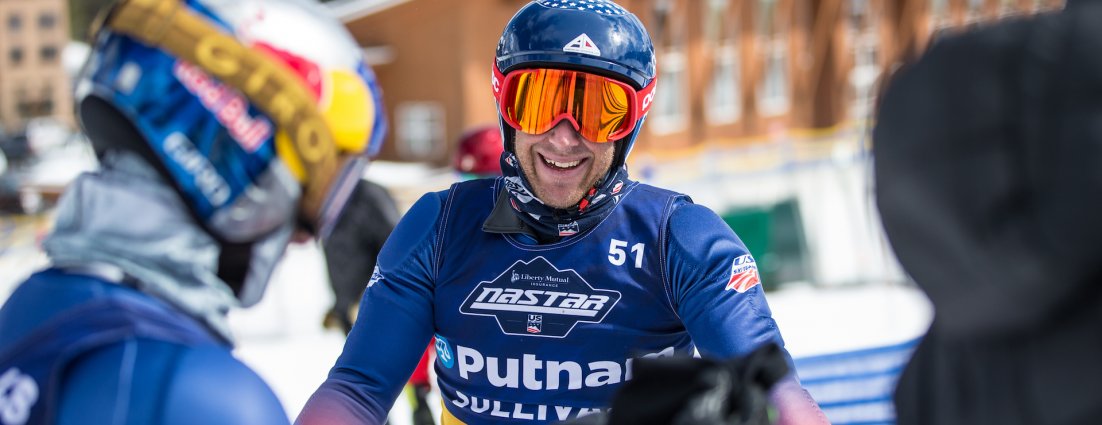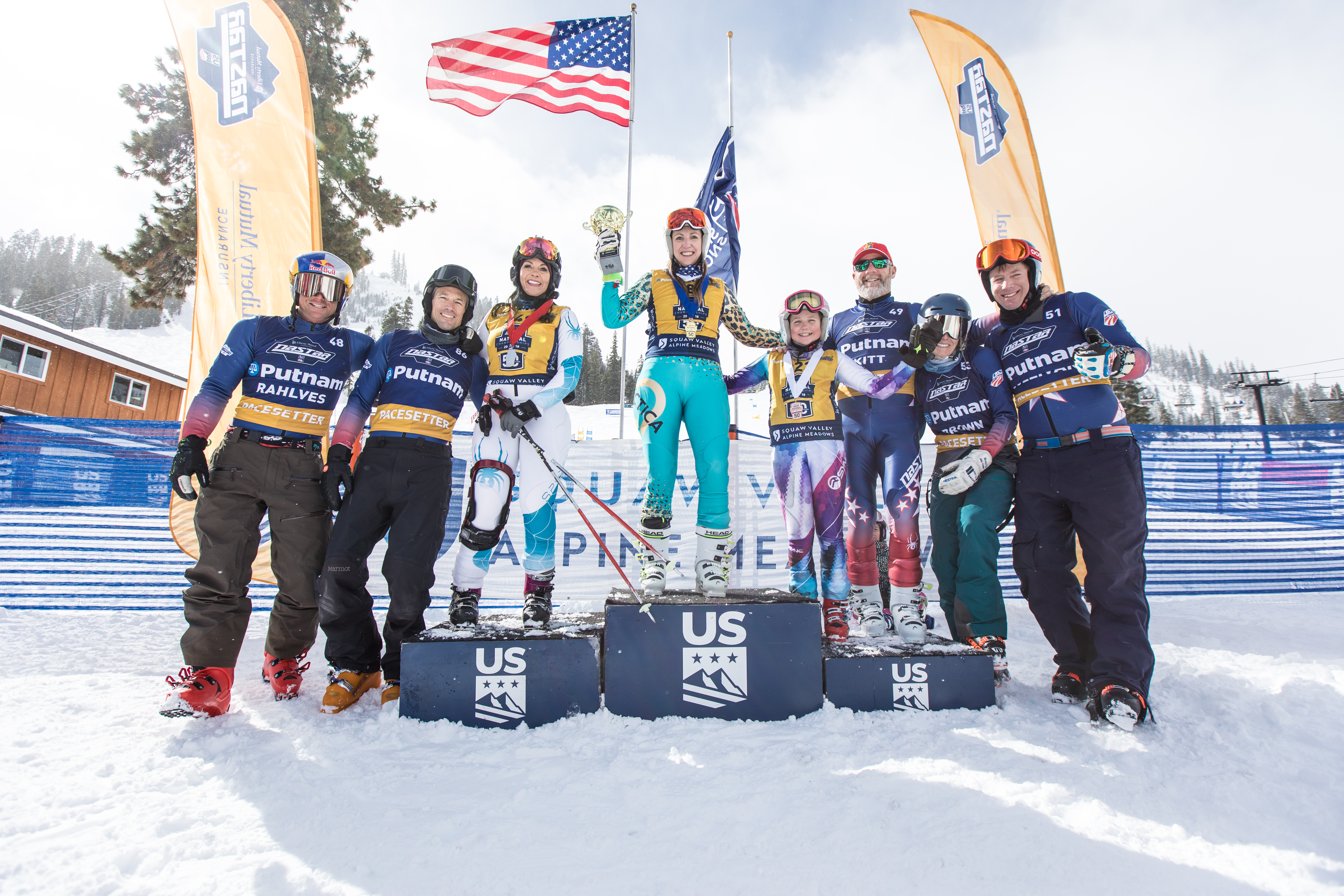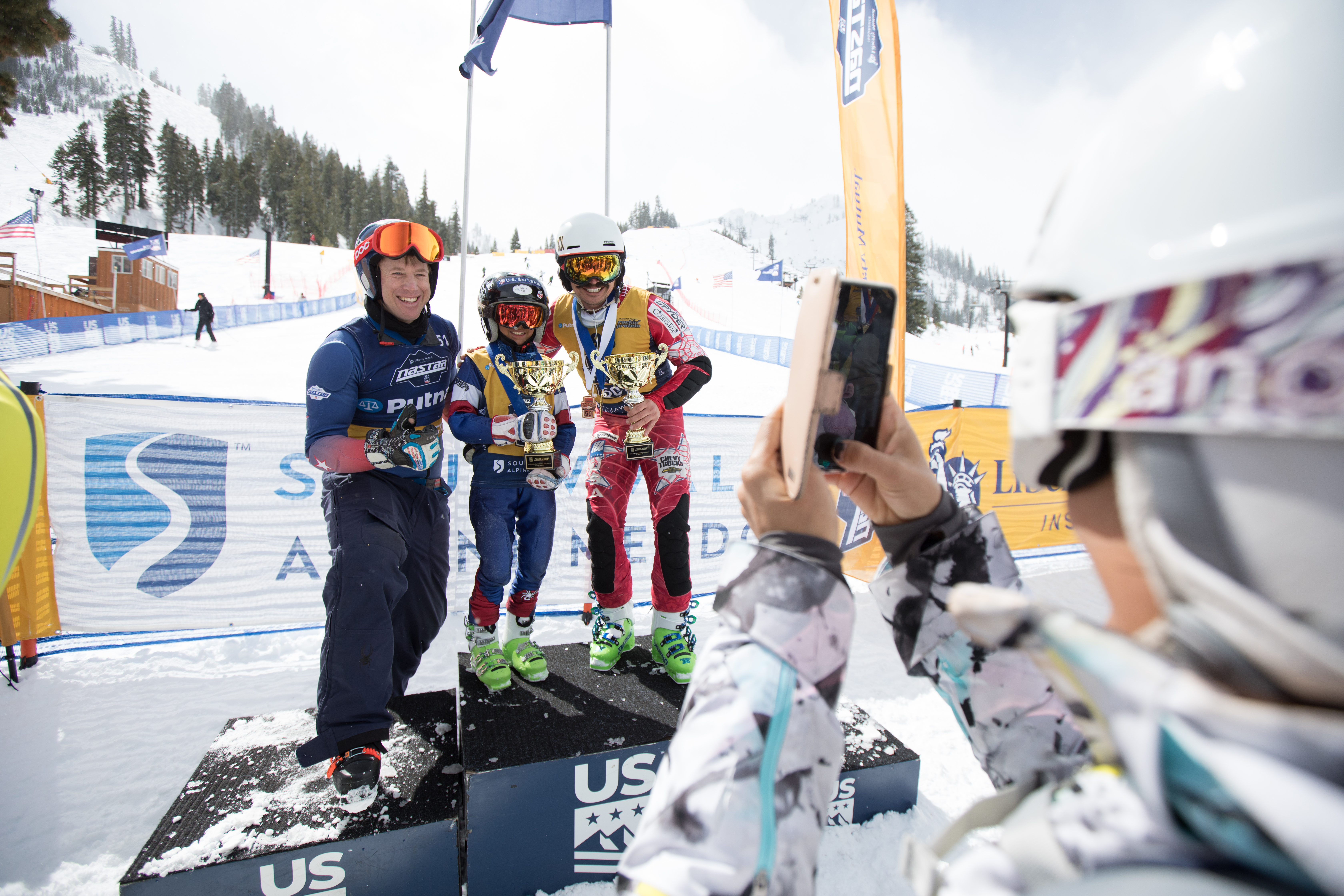Marco Sullivan is So Much More Than a Pacesetter
01.08.2019 | Claire Thomas

Epiphanies are often followed by courageous and, at times, life-altering decisions. The heightened degree of clarity produced in these realizations encourages individuals to take bold steps forward. However, while this may play out in rom-coms, (think Cameron Diaz shouting at her driver to turn the car around so she can remain in England with Jude Law in The Holiday), many epiphanies stem from reservations, and result in a (figurative and literal) step back. And although the initial step may have stemmed from a place of hesitation, the epiphany is no less significant.
Ski racers come to the decision to retire in a variety of ways. For some, the decision is made for them, via injury, graduation or other concluding circumstances. For others, the love of the sport fizzles out, and over the course of a season, taking a step back is found to be the right thing to do. Lastly, there are the “epiphaniers”; the ones who can pick out a specific moment in time when they knew it was time to replace the rigid plastic shells with cushy liners.
Within this latter grouping resides NASTAR National Pacesetter, Marco Sullivan. Sullivan, now 38, chose to retire at the end of the 2015-16 season. Sullivan stepped away after a respectable thirteen season career on the World Cup, highlighted by one World Cup Downhill win at Chamonix, France in 2008, and four other World Cup Downhill podiums. He also attended four Olympic Games (‘02, ‘06, ‘10, ‘14) and four World Championships. Spectators of the 2016 U.S. Nationals in Sun Valley will forever remember his legendary retirement lap in a Lederhausen, followed by champagne showers in the Warm Springs finish area. Although his smile and celebratory rituals lit up the shady ski hill, his decision to retire wasn’t so glamorous.
In the start area of Kitzbuehel’s 2016 World Cup Downhill, it became apparent via radio chatter that there was a precarious area of the course, where lots of other skiers, (namely Aksel Lund Svindal), had fallen and sustained significant injuries. Hearing this, Sullivan felt something foreign to his usual level-headed confidence-- hesitation. He had known that he was approaching the typical age of retirement, but this feeling was too much to overlook. Hesitation transferred into his run, especially as he approached the deteriorated section. He didn’t charge through this part of the course as he would have in the past. “I backed off and skied a safe line”. In this moment, he “knew in [his] head that [he] wasn’t willing to take those [kinds of] risks anymore”.
Ask any skier entering retirement, the transition is tough. For Marco, once he no longer had “the main goal of being the fastest downhill racer in the world, along with a familiar routine, [his sense] of purpose was taken away.
“It’s not a bad thing, but definitely a big change,” Sullivan said.
So, just weeks after announcing his retirement, Marco found a fun way to remain involved with ski racing, one that gave him an ample dose of start gate jitters, and simultaneously allowed for much more time at home-- NASTAR pacesetting. Bill Madsen, the head of NASTAR, approached Marco regarding the possibility him fulfilling this role at the 2016 USSS Summit Meetings. AJ Kitt, the former NASTAR Pacesetter, was ready to hang up his bib just as Marco was entering retirement. “I was still fresh and fast from racing so it was the perfect, fun transition” Sullivan explained.

As Marco enters his third season of pacesetting for NASTAR, he speaks fondly of the NASTAR circuit and the many new experiences it has given him. He has skied in places he would have never expected, such as Virginia, Pennsylvania and Connecticut. He travels around fifteen days a year, and is still able to compete against familiar faces such as Daron Rahlves, who had been a long-time mentor and friend since their days on the World Cup circuit. “He’s still charging and as competitive as he was years ago” Marco said with a laugh.
In visiting ski areas that are large and small, steep and flat, well-known and (frankly) janky, one thing holds true -- NASTAR is providing an accessible avenue into ski racing, no matter one’s age or interest level in the sport. “It is an amazing platform for families who aren’t necessarily super serious about ski racing, but have all levels of ability in their family” he said. With the many age categories, all competitors “have a fair chance of getting on the podium”, especially for those “who are intimidated by the scene of FIS racing and club involvement in general”. On the other hand, it can also be used as a platform for higher level racing. “It may be the way for a young racer to jump off the trampoline into bigger things, and you never know where that may lead” he said.
Though the decision to step away from World Cup racing was right for Sullivan, his love for the sport and close bond with former teammates on the U.S. Men’s Speed Team have motivated him to stay involved. He just finished travelling with the American Downhill team, where the circuit took them to Lake Louise and Val Gardena in recent weeks. He’s taken up a fluid role, ranging from start coach to spectator, and at times a coach-like role during inspection. “It’s been pretty cool to watch from the other side of the fence”.

“I’ve really enjoyed seeing the different personalities of the guys, and understand what works best for them” Maro says. For example, “Bryce is really confident in his skiing right now, so I try to just give him words of encouragement and stay out of his way for the most part”. On the other hand, for someone like Sam Morse, who is still getting the feel for the World Cup scene, Marco has taken a more active role. He has inspected the course with Sam and been able to give his veteran advice on courses he’s ran multiple times, such as Val Gardena.
Beyond his involvement with the current USST guys, Marco remains a part of the skiing development scene through his American Downhiller Camp. Initially as his own website name, “American Downhiller” has been trademarked as a group name for the entire US Men’s Speed Team. “It has helped to give [the team] an identity as a cohesive group and encourage the movement of speed skiing to continue in the United States” he said. The group now runs an annual speed training camp in the spring of every season, where kids U14 and older have the opportunity to be coached by an all Olympic Speed Skiing squad.
In the upcoming weeks, Marco will make a trip east to paceset at various ski resorts. He’ll be setting the pace for the NASTAR Eastern Regional Championships in Windham Mountain, New York and at the Midwest Regional Championships in Crystal Mountain, Michigan in February. Marco’s dedication to the sport is inspiring and his desire to carry through ski racing is admirable. If you’re heading to Squaw Valley for NASTAR Nationals, you’ll have the chance to join Marco on his home hill for a head to head race in April at the end of the 2018-19 ski season.